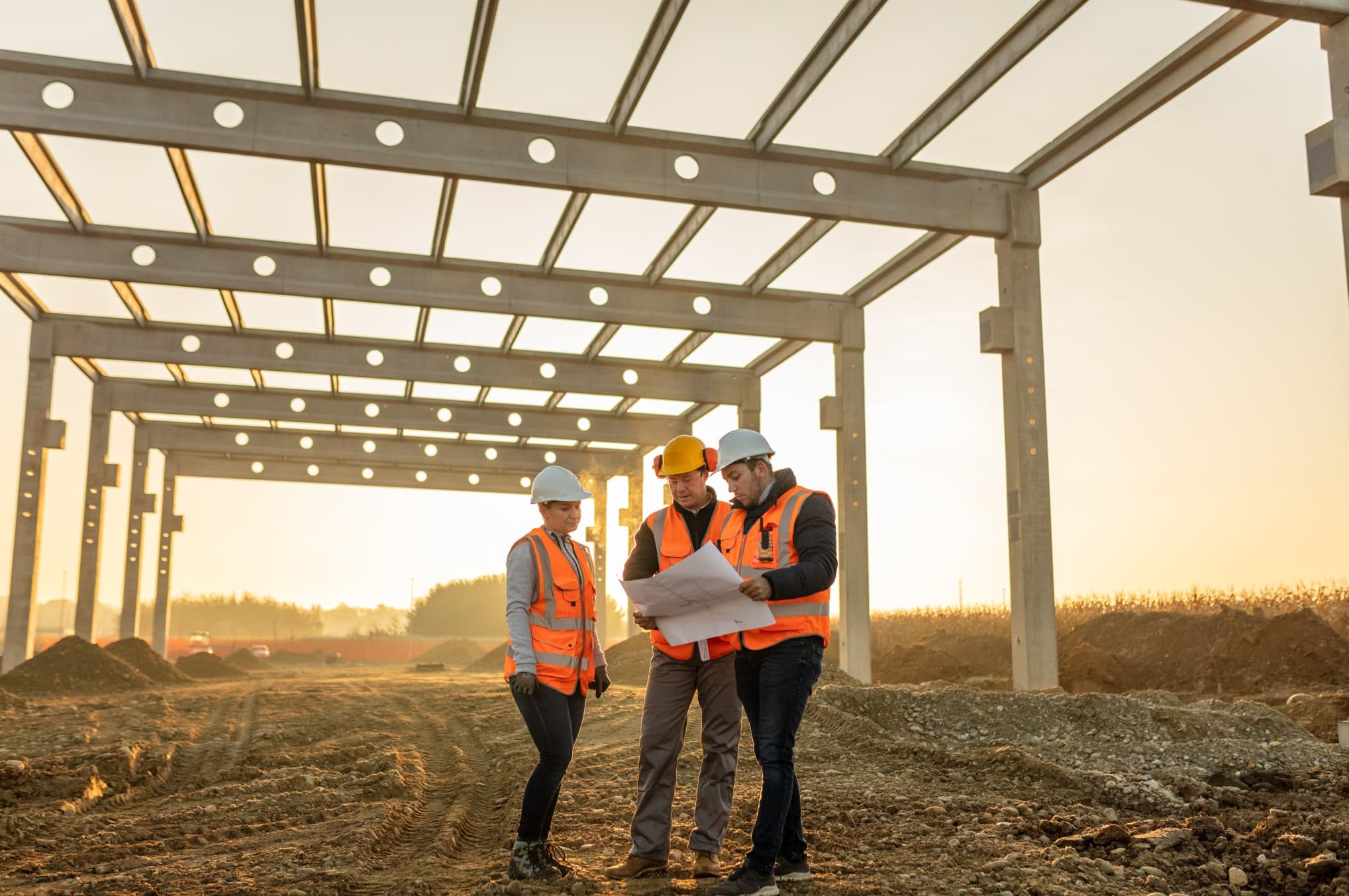Part 1 - Understanding how a property development feasibility study can ensure the success of your next project
This is part 1 of our five-part property development feasibility series. Set your development feasibility up for success and learn how to determine the best financial outcome for your next development project.

Overview
In this part 1 of the guide, we unpack basic fundamentals to a property development feasibility study and explore:
Why does a financial feasibility study matter?
What are the three levels of development feasibility?
How do I choose the right feasibility model?
How do I assess risk and uncover opportunities?
What property development costs should I consider?
What tools can help me make the best decision?
Why does a financial feasibility study matter?
What is a feasibility analysis?
A feasibility analysis, also known as a feasibility study, is a crucial step in the property development process. It's essentially a thorough assessment of a proposed project to determine its likelihood of success. Think of it as a reality check before you commit significant time and resources.
This analysis delves deep into various factors that can impact your development, examining things like:
Market conditions: Is there demand for the type of property you're planning? What are the current and projected sales prices and rental rates?
Site specifics: Does the site have any limitations or constraints that might impact construction or the final product? Are there any zoning or environmental regulations to consider?
Financial viability: Can you secure the necessary funding? What are the projected costs, and will the potential returns make the project worthwhile?
By conducting a feasibility analysis, you can identify potential roadblocks and make informed decisions about whether to proceed with a project. It helps you weigh the risks against the potential rewards, ultimately saving you from costly mistakes and setting you up for a successful development.
Why does a financial feasibility study matter?
Successful development is all about balancing risks and returns. A feasibility study is the starting point to achieve the maximum potential and best possible return – the highest and best use – for any development.
A financial feasibility study evaluates the rate of return for any real estate development. It can give you confidence in your decisions and determine whether the development project will be a financial success or not.
With a detailed appraisal of the potential risks and returns, you’ll be able to test every assumption, make intelligent decisions and maximise every opportunity.
What are the three levels of feasibility?
A real estate development feasibility study assesses a proposed plan to determine whether it is likely to be a success. Every successful developer knows that a development feasibility study is never a once-off set-and-forget exercise. Instead, it is an evolutionary process. Rarely does an initial feasibility study mirror the final outcome.
Typically, feasibility studies are undertaken over three stages, each uncovering deeper detail about the project. These levels of feasibility are:
High-level feasibility: The very first feasibility step – sometimes called a preliminary analysis or ‘back-of-the-envelope calculation’ – explores ideas and considers pluses and minuses of the development site. You may make assumptions based on attributes and constraints and make some guesses about local supply and demand.
Static feasibility: The assumptions you made during the high-level feasibility study will become grounded in more solid facts, and you’ll have a clear understanding of the highest and best use for the site. There is still a bit of guesswork – particularly relating to revenue, time and cost – at this stage of feasibility, so you shouldn’t make a purchasing decision just yet.
Cash flow feasibility: Finally, at this stage, you get down to the granular detail, especially around project financing and funding requirements. As you negotiate a price, you need to understand how much money will go out and how much will come in. Check and challenge all your assumptions. Do the revenue, time and cost numbers still stack up?
How do I choose the right feasibility model?
Determining whether a project “stacks up” can take considerable time and effort – but a real estate development feasibility study gives you confidence in your decisions and determines whether your development dream will be a financial success or a failure.
There are many different feasibility models, but there are two commonly used in the property development game: the development margin approach and discounted cash flow analysis. We’ll take a deeper dive into these below.
Development margin approach
When you know the exact price paid for land or can estimate its value, you can use the development margin approach to determine the proposed profit on your development project. Using this traditional model, you estimate the total development cost in current, not inflated, dollars (including interest on 100% borrowings). The simple formula below is known as the ‘back-of-the-envelope’ approach.
Development margin = Net profit / Total development cost
The anticipated revenue is calculated based on the project sale values, and the costs (including land but not the developer’s margin) are subtracted to estimate the net profit. You then calculate the development margin by dividing profit by total development cost.
This approach is quick and easy and is a good method for comparing similar projects on similar time frames. The biggest disadvantages? It does not account for the time value of money, so it is ineffective on longer projects. Comparisons between projects with different time spans and investment opportunities can also be tricky.
Discounted cash flow analysis (DCF)
The development margin approach’s disadvantages often lead developers to the discounted cash flow method, also known as DCF.
DCF estimates the value of an investment based on its future cash flows. DCF analysis attempts to determine the value of an investment today, based on projections of how much money it will generate in the future.
Usually, a dollar today is more valuable than a dollar next year, so DCF analysis considers the time value of money and how that impacts the returns to the developer over time. In this method, the value of all cash items is calculated for each time period, delivering a net cash flow range over time.
Because it accounts for the time value of money, the assumptions of this method are more explicit. But it can also be complex and time-consuming to undertake without the help of powerful software.
Let’s take a closer look at a sample DCF analysis below and unpack some of the key inputs.
Net present value: NPV is the current estimated dollar value of an asset, investment or project. NPV measures expected future cash inflows and outflows, adjusted for the initial purchase price, to calculate how much the asset is worth. A zero NPV project will repay the original investment plus the required rate of return. A positive NPV repays over and above the required rate of return, while a negative NPV is not feasible.
Internal rate of return (IRR): The IRR is the other side of the NPV coin and calculates the actual return on investment on an annualised basis. The IRR is the discount rate at which the net present value equals zero. For example, money invested in a bank account earning interest of 5% would have an IRR of 5%. IRR can be difficult to calculate—although software like ARGUS EstateMaster and ARGUS Developer has made crunching the numbers and determining the IRR easier.
Discount rate: If a project needs a certain investment now (as well as in the future) and you can predict the future returns it will generate, then the discount rate can help you to calculate the current value of cash flows. If the net present value is positive, the project is viable. Otherwise, it is considered financially unfeasible.
How do I assess risk and uncover opportunities?
A property developer must manage the competing forces of risk and return. There’s a very simple mantra which remains fundamentally true in property development: the greater the risk, the greater the return.
The simplest form of risk analysis is sensitivity analysis, which should be used to understand how changes to individual inputs (such as construction cost or sales values) might affect the feasibility of your project. Ie. What happens if construction costs rise by 10% or fall by 5%?
Scenario modelling can be used to evaluate highest and best use. Every feasibility study should consider whether or not the proposed development is the highest and best use, and whether another type of asset would maximise the value.
Property developers are increasingly using sensitivity and scenario analysis to assess risk and uncover opportunities. Read more in our Property Development Feasibility series part 2 – Balancing risk and return in property development
What property development costs should I consider?
At the end of the day, property development is about making money – and that means understanding your costs. A fulsome feasibility study will consider these main costs:
Acquisition cost: Costs associated with acquiring the development, including legal costs, stamp duty and rates.
Construction costs: Usually calculated based on the design or size of the development at a per square metre rate. If you receive a fixed price construction cost from a builder, this is a massive advantage.
Council costs and regulations: Local regulatory bodies and councils will charge different amounts for different certifications. Be sure to consider development approval applications, building permit fees, zoning, strata titles and subdivision costs.
Landholding costs: Property development projects don’t end the day the workers leave the site. You may hold the properties for some time before you sell them – which means you are must continue to meet your financial obligations.
Professional fees: This should include all fees charged by consultants and professionals such as lawyers, town planners or architects, quantity surveyors or engineers, and is typically a percentage of construction.
Sales and marketing: Any fees hired to help market or sell the property. From brochures to immersive virtual reality experience to commission-based real estate agents selling your property.
Tax: Taxes may vary depending on the jurisdiction, but they are an inevitable and fundamental part of the development process.
Contingency: Few property developments go exactly to plan, and a contingency helps you stay on track when costs exceed your budget. Typically, 5-10% of the budget should be allocated to cover additional or unexpected costs during the construction project. Leaving out the buffer can easily cause budget blowouts. Conversely, an over-inflated contingency may mask a project’s viability.
Continue reading the next instalment: Property Development Feasibility series part 2 – Balancing property development risk and return
Set your development feasibility up for success with ARGUS EstateMaster
To uncover deeper details about your project, you’ll need to depend on sophisticated software, like ARGUS EstateMaster. With a robust solution, you’ll be able to input more data to build a more accurate real estate feasibility study, allowing you to make confident financial decisions.
Once you input your costs and revenues, you can calculate key performance indicators, including residual land value, development margin and profit, net present value and internal rate of return to help you evaluate development opportunities.
Author

Lionel Newcombe
Real Estate Solution Expert
Author

Lionel Newcombe
Real Estate Solution Expert
Resources
More on development feasibility




Jan 8, 2025
Part 4 - The trade-off between development feasibility software and spreadsheets


